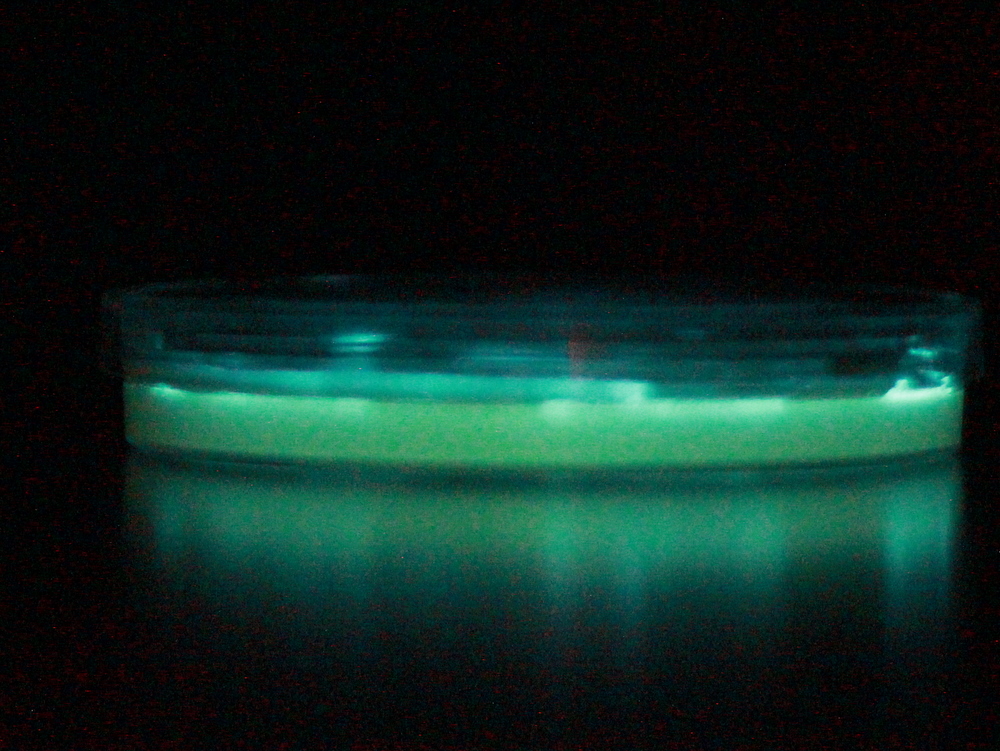Team:Cambridge/Bioluminescence/Bacterial Luciferases
From 2010.igem.org
(Difference between revisions)
| Line 2: | Line 2: | ||
{{:Team:Cambridge/Templates/headerbar|colour=#fb5c2b|title=Project Vibrio: Introduction}} | {{:Team:Cambridge/Templates/headerbar|colour=#fb5c2b|title=Project Vibrio: Introduction}} | ||
{{:Team:Cambridge/Templates/RightImage|image=Cambridge-Photobacterium_plate.JPG|caption=One of the plates of <i>V. phosphoreum</i> we prepared.}} | {{:Team:Cambridge/Templates/RightImage|image=Cambridge-Photobacterium_plate.JPG|caption=One of the plates of <i>V. phosphoreum</i> we prepared.}} | ||
| - | '''Project Vibrio''' was designed to complement Project Firefly, by using bacterial lux operons to do what had been impossible with firefly luciferases | + | '''Project Vibrio''' was designed to complement Project Firefly, by using bacterial lux operons to do what had been impossible with firefly luciferases: |
| - | * Substrate production | + | * Emission of blue light to fill the gap in our spectrum of emission wavelengths. |
| - | + | * Substrate production within E. coli, avoiding the need for external addition of substrates, such as luciferin. | |
| + | |||
| + | Bacterial lux operons can be found in a range of [https://2010.igem.org/Team:Cambridge/Bioluminescence/Background natural bioluminescent bacteria]. | ||
==Pathway== | ==Pathway== | ||
Revision as of 17:34, 23 October 2010

Project Vibrio: Introduction
Project Vibrio was designed to complement Project Firefly, by using bacterial lux operons to do what had been impossible with firefly luciferases:
- Emission of blue light to fill the gap in our spectrum of emission wavelengths.
- Substrate production within E. coli, avoiding the need for external addition of substrates, such as luciferin.
Bacterial lux operons can be found in a range of natural bioluminescent bacteria.
Pathway
Bacterial lux operons emit light using five enzymes:
- luxA and luxB form the luciferase of the system, they emit light using the substrate tetradecanal
- luxC, luxD and luxE are involved in the biosynthesis of tetradecanal from readily available substrates
Bioluminescent species
The Cambridge team is looking into these bacterial luciferases:
- Vibrio fischeri forms symbioses with squid to prevent the squid from casting a shadow on moonlit nights. Due to this their lux proteins are non-functional above 30 degrees
- Vibrio (formerly Photobacterium) phosphoreum emits a very blue light, perhaps partly through its use of lumazine
 "
"
